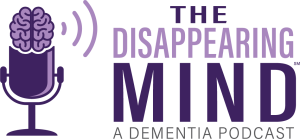What is osteoporosis? While we know that osteoporosis develops over time, we’re discovering that the active process of bone turnover, in which the destruction of old bone outnumbers the synthesis of new bone, leads to mineral and bone strength loss. Cells engaged in the resorption of old bone lose their vitality as they age, whereas cells involved in bone creation and the sensation of pressures on the skeleton lose theirs. Due to an increased proclivity to fall, these age-related changes eventually contribute to the prevalence of fractured bones.
The good news is that many studies have uncovered interesting new areas for future research, while others propose specific actions people should take right now to enhance their bone health.
You can do a few things every day to lower your risk of bone loss and illness throughout your life. Even if bone loss has already begun, there are still things you can do to maintain your bones strong and reduce osteoporosis risk later in life.
Increase your Dietary Protein Intake
According to a research, seniors who watched their diet had a lower risk of hip fractures than those who eat less protein on a regular basis. According to research, older women should take at least 46 grams of protein each day, while older males should consume at least 56 grams. This may be obtained from both animal and plant sources (meat, poultry, fish, eggs, milk, cheese, and yogurt) (legumes, grains, nuts, seeds, and vegetables).
Dairy products in general, as well as antioxidants found in fruits and vegetables, are other dietary components that contribute to bone strength.
Get a Screening Test
Although vitamins and minerals are beneficial to bone health, consuming only Vitamin D and calcium is unlikely to lessen the risk of fracture. Getting a screening test, such as a bone mineral density measurement or completing a fracture risk assessment, is the best way to prevent fractures. Treatment may consist of exercise and nutrition to maintain bone mineral density or using one of several authorized prescription drugs if the risk of fracture is severe. Vitamin D may help weak elderly people in long-term care facilities avoid falling.
Secondary Prevention of Fractures
The “low hanging fruit” of medical treatment is secondary fracture prevention. Prescription drugs should be generally suggested for people who have experienced a hip fracture. Older persons who have already had a hip fracture are at a very high risk of second fracture within the first year.
Exercise Regularly
Regular exercise, especially weight training, can help to prevent bone loss and develop muscles. A recent Marcus Institute study found that practicing Tai Chi for nine months enhanced bone mineral density and slowed bone turnover, not to mention the advantages of Tai Chi in preventing falls. Exercise also increases muscle strength, which is beneficial in preventing falls, fractures, and hospitalizations.
Eliminate Smoking and Excessive Alcohol
It is possible to make a difference by altering one’s lifestyle. Smoking and heavy alcohol intake should be avoided. Reduced smoking and excessive alcohol use have been linked to a drop in hip fracture rates in the United States, according to researchers at the Marcus Institute.








